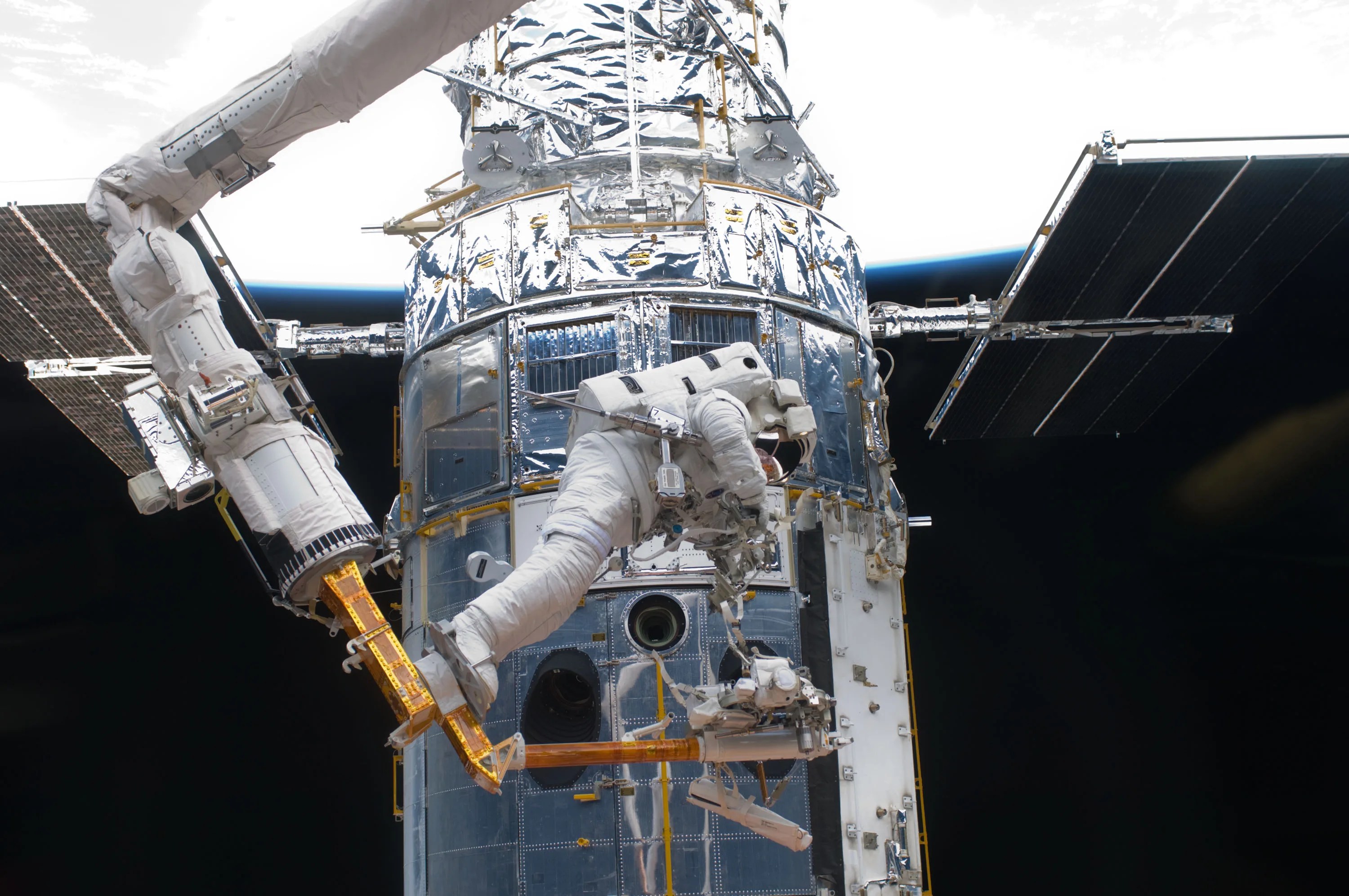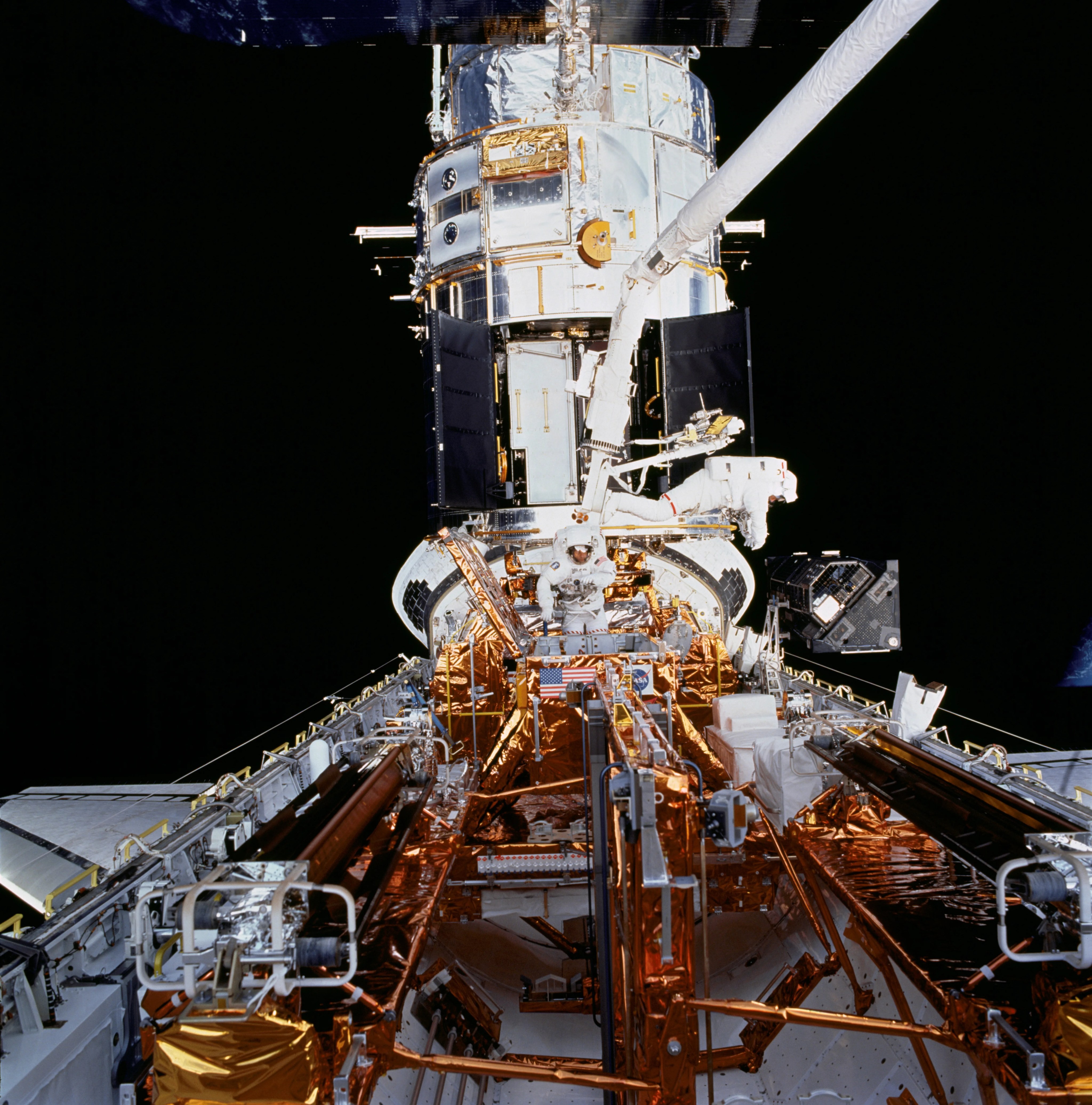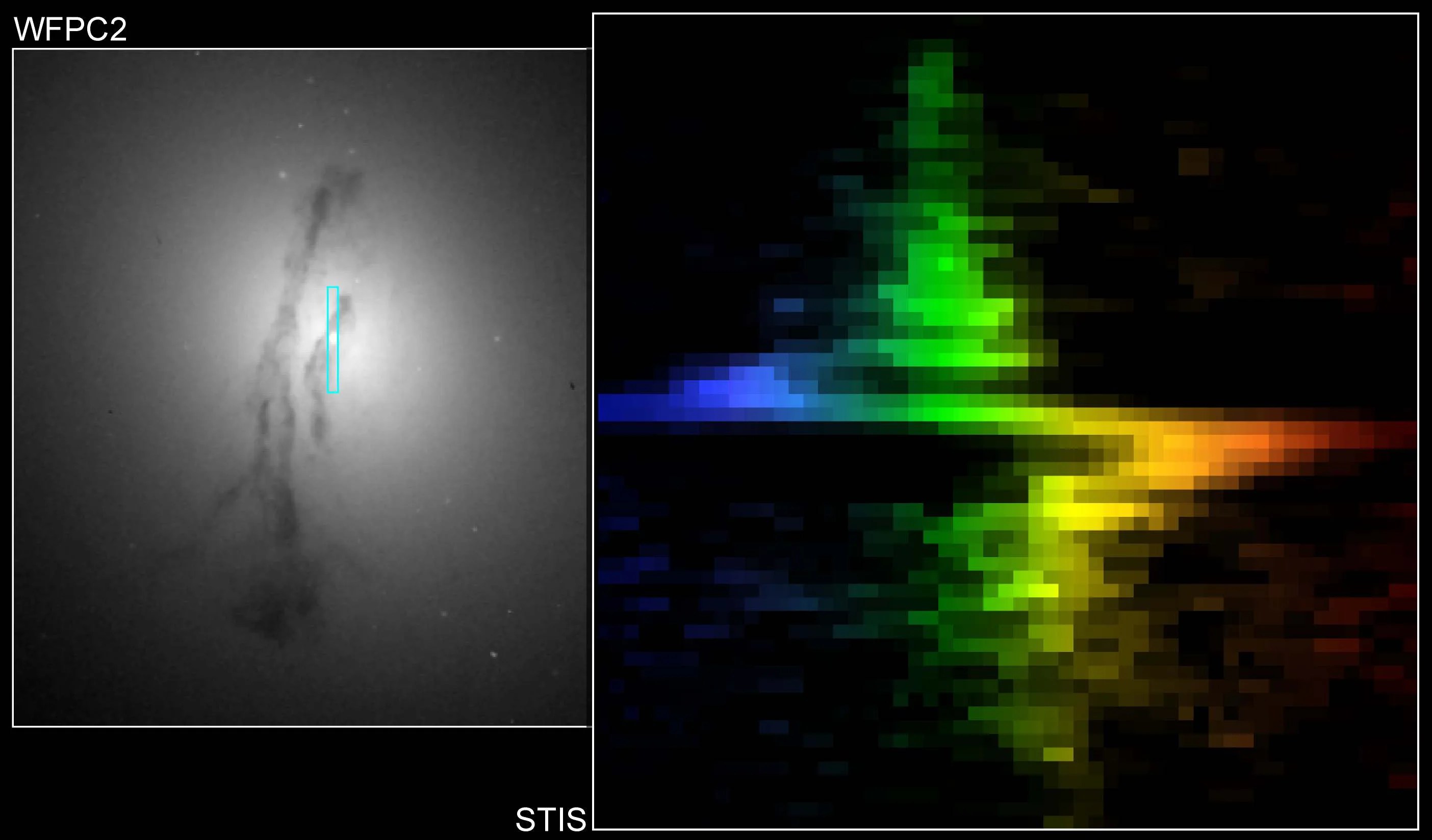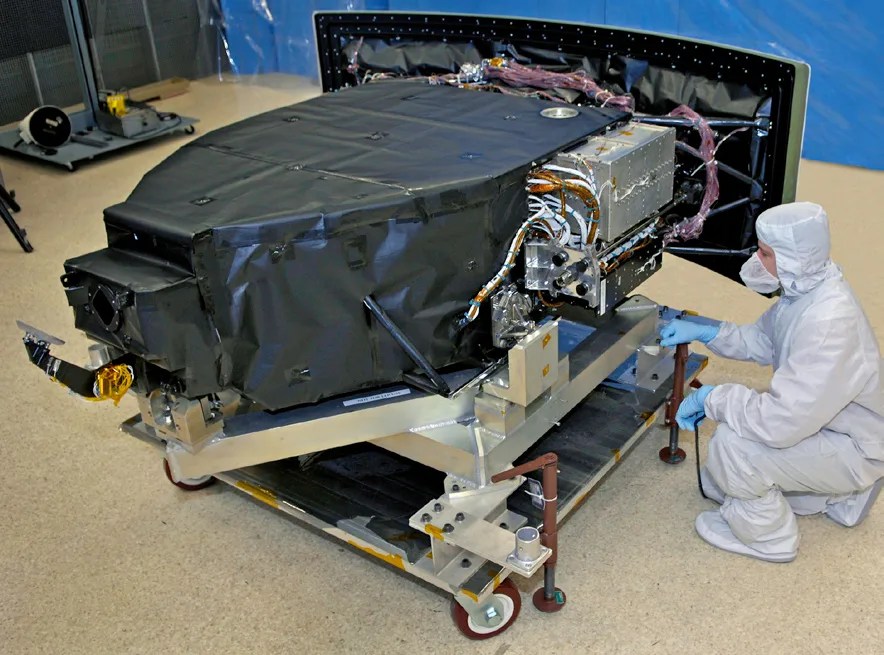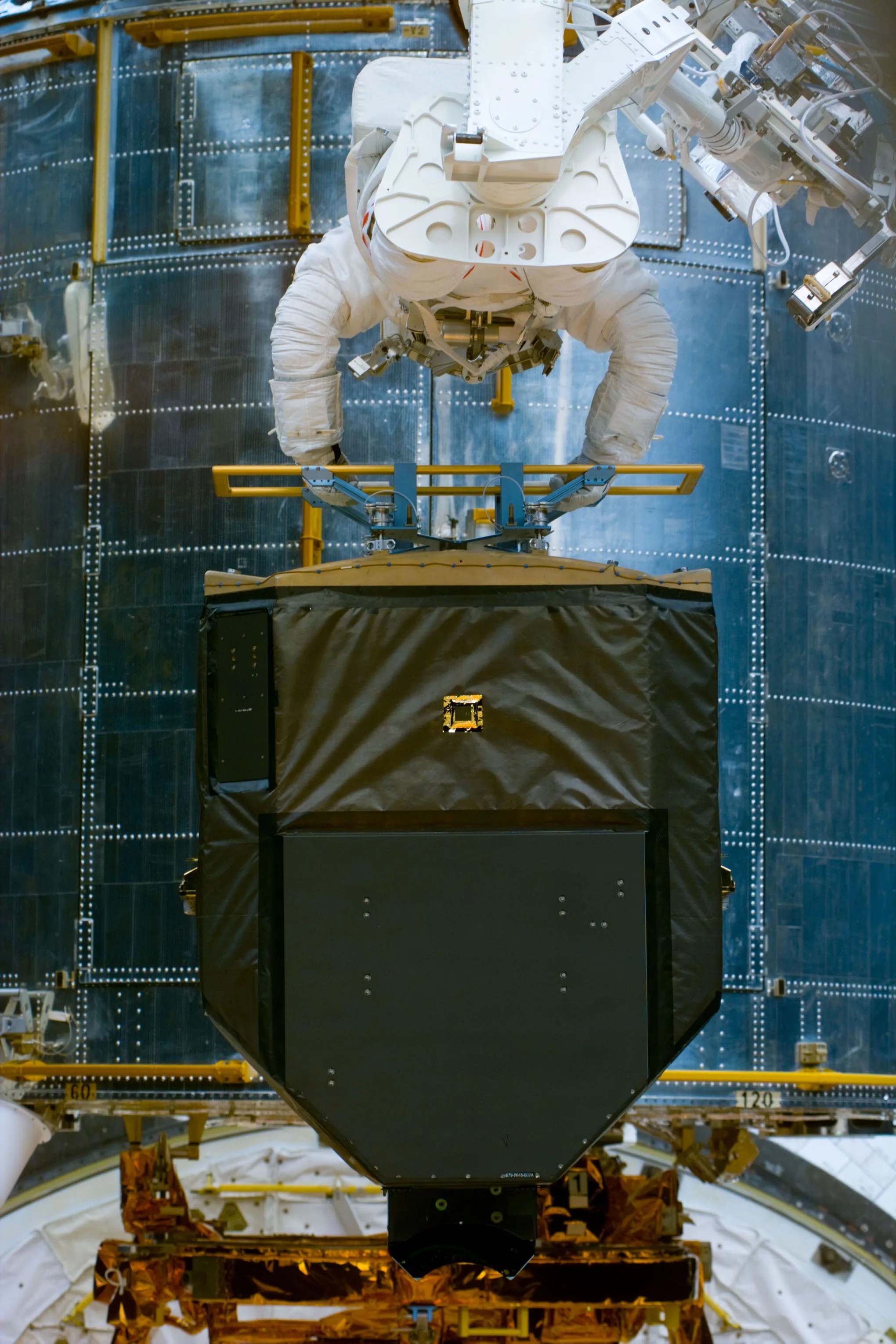Design
Cosmic Origins Spectrograph
The Cosmic Origins Spectrograph (COS), installed during SM4 in 2009, has expanded Hubble’s spectroscopic capabilities. The instrument provides unique capabilities that are taking the telescope into exciting new discovery space.
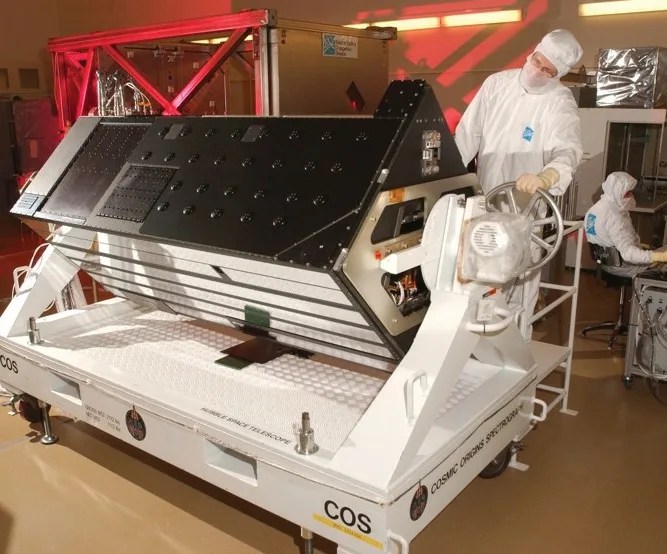
Overview
COS studies the large-scale structure of the universe and how galaxies, stars and planets formed and evolved, and it can help to determine how elements needed for life, such as carbon and iron, first formed.
As a spectrograph, COS doesn’t make images but instead performs spectroscopy, the science of breaking up light into its individual components. Any object that absorbs or emits light can be studied with a spectrograph to determine its characteristics such as temperature, density, chemical composition, and velocity.
The Instrument
COS has two channels, the Far Ultraviolet (FUV) channel covering wavelengths from 90 to 215 nm, and the Near Ultraviolet (NUV) channel, covering 170 to 320 nm. Ultraviolet light, the type of radiation that causes sunburn, is more energetic than visible, optical light; and “near-UV” refers to the part of the UV spectrum closer to the visible, just beyond the color violet.
The light-sensing detectors of both channels are designed around micro-channel plates, thin plates comprising thousands of tiny curved glass tubes, all aligned in the same direction. Incoming particles of light, called photons, ultimately induce showers of electrons that are emitted from the walls of these tubes. The electron showers are accelerated, captured, and counted in electronic circuitry immediately behind the micro-channel plates.
A key feature of COS—the one which makes it unique among Hubble spectrographs—is its maximized efficiency, or “throughput.” Each bounce of a light beam off an optical surface within an instrument takes some of the light away from the beam, reducing the throughput. This is a problem that is especially acute in the UV, and the COS FUV channel was designed specifically to minimize the number of light bounces. The incoming FUV beam makes one bounce off a selectable light-dispersing grating and goes directly to the detector. An additional advantage within COS is the very low level of scattered light produced by its light-dispersing gratings.
COS and the Space Telescope Imaging Spectrograph (STIS), currently aboard Hubble, are highly complementary in their capabilities. STIS, installed in 1997 during Servicing Mission 2, is a highly versatile, “all purpose” spectrograph.
By design, COS does not duplicate all of STIS’ capabilities, but by having more than 30 times the sensitivity of STIS for FUV observations of faint objects such as distant quasars, COS can perform key scientific programs that would not be possible with STIS. The two spectrographs working together provide a full set of spectroscopic tools for astrophysical research.
Mission Science Discoveries
Hot Planet Has Comet-Like Tail—COS observations have confirmed the existence of an extremely hot planet, named HD 209458b, which is orbiting so close to its star that its heated atmosphere is escaping into space. The study suggests that powerful stellar winds are sweeping the cast-off atmospheric material behind the scorched planet and shaping it into a comet-like tail.
White Dwarfs Surrounded by Water-Rich Planetary Debris—COS observations helped astronomers find the building blocks of solid planets that are capable of containing substantial amounts of water. The rocky debris is orbiting the white dwarf star, GD 61. The finding is based on a chemical analysis of the debris falling into GD 61. COS also found the chemical signature for the building blocks of rocky, Earth-sized planets in the atmospheres of two other white dwarfs. The discovery suggests that rocky planet assembly is common around stars, and it offers insight into what will happen in our own solar system when our sun burns out 5 billion years from now.
Ultraviolet Light Heats Up Early Universe—During a period of universal warming 11 billion years ago, quasars produced fierce radiation blasts that stunted the growth of some dwarf galaxies for about 500 million years. Astronomers used COS to study the early universe when ultraviolet light emitted by active galaxies heated up the intergalactic helium. The hot helium could not gravitationally collapse to form new stars in some small galaxies. The COS results yield new insight into an important phase in the universe’s history.
Galaxies Are the Ultimate Recyclers—COS observations of gas in our Milky Way galaxy’s halo and in 40 other galaxies helped astronomers increase their understanding of the ways in which galaxies continuously recycle immense volumes of hydrogen gas and heavy elements. This process allows galaxies to build successive generations of stars over billions of years. The COS study showed that a large mass of clouds is falling through the giant halo of our Milky Way, fueling its ongoing star formation. COS reveals that hot outflows of gas extend to much greater distances than previously thought and can carry a large amount of gas out of a galaxy. Some of the hot gas is moving more slowly and could eventually be recycled. The observations show how gas-rich star-forming spiral galaxies can evolve to elliptical galaxies that no longer have star formation.
Source of Magellanic Stream—Astronomers used COS to solve a 40-year mystery on the origin of the Magellanic Stream, a long ribbon of gas stretching nearly halfway around our Milky Way galaxy. The observations reveal that most of the gas was stripped from the Small Magellanic Cloud about 2 billion years ago; a second region of the stream originated more recently from the Large Magellanic Cloud. Astronomers determined the source of the filament by using COS to measure the amount of heavy elements, such as oxygen, along the stream. They pinpointed those elements by analyzing ultraviolet light from distant quasars, which passed through the stream. The elements were detected by the way they absorb ultraviolet light.
Servicing Mission 4
The Hubble Space Telescope was reborn with Servicing Mission 4 (SM4), the fifth and final servicing of the orbiting observatory. Two instruments were repaired during the mission, and two new ones were added, including the Cosmic Origins Spectrogaph.
Learn More